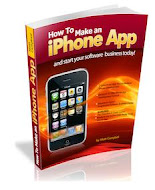The iPhone can do many things. Now it can even lock and unlock a car and start the engine.
Cambridge, Mass.-based car-sharing service Zipcar launched an app that lets you locate and reserve one of its vehicles, unlock it using the iPhone's touch-screen and drive it off the lot.
"The iPhone is a pipeline for almost one-third of our members," says Luke Schneider, Zipcar's chief technology officer. "This is something they have been asking for."
While there are many iPhone apps for autos, most are focused on directions, traffic, roadside assistance and games. Zipcar's app is the first to control the operation of a car, which is why David Cole, chairman of the Ann Arbor, Mich.- based Center for Auto Research, calls it a "breakthrough."
"Once you have this kind of electronic ability in a cellphone, there's no end to the type of technology you could bring to cars," he says.
How it worksZipcar operates mostly in big urban areas, in 13 major cities and 120 university campuses. Members pay a $50 annual fee plus around $7 an hour to rent a car for a few hours, including gas and insurance.
To reserve a car, Zipcar offers telephone or Web-based tools. Now, a reservation can also begin from the iPhone. The transaction is completed with a map and directions to the nearest Zipcar parking lot.
Once there, Zipcar members find their car by using the iPhone to honk a virtual horn, which in turns triggers the real horn on the reserved Zipcar.
Next: Swipe the membership card over the dash to get access to the car keys, which are left in the car but are powerless without the authorization.
Once the member card has been swiped, Zipcar members can use the virtual iPhone to unlock the car doors and drive away for the duration of their trip.
"When you look at the app, it looks just like a car key," says Jim McDowell, vice president of BMW's Mini division, whose vehicles are used by Zipcar. "To give you the ability to get into a car with one touch on an iPhone is really cool."
Schneider made this work with basic cellular technology.
"The app uses the same wireless network that keeps the Zipcar fleet connected," he says.
A little black box Schneider calls the Zipcar M200 — the "brains" of the car — sits in all vehicles in a hidden location, controlling the use of the car. It prevents, for instance, the driving of the car — even with the keys — if a windshield is smashed by thieves.
Sharing a key, via iPhoneThere are a lot of upper-end vehicles on the market that offer "keyless" ways to start an engine, using radio signals.
You get assigned a key and a fob for new models of the Mini, for instance. As long as it is in your pocket or purse, you can start the car by pressing the start button.
"If I'm going to the gym with a gym bag in one hand, and briefcase in the other, I really don't want to have to fumble for my keys," McDowell says.
Getting the average family to share a key is easy, he adds. "But in this case, it's thousands of people sharing a key, via the iPhone."
Now that Schneider has shown how to open and start a car with a cellphone, will manufacturers jump aboard?
It could happen in five to 10 years, says Tim Bajarin, an analyst at Creative Strategies. "I wouldn't be surprised if all the next-generation cars have electronic locks tied to smartphones."
Schneider first demonstrated the iPhone Zipcar app at a June gathering of Apple software developers, expecting it to be available over the summer.
It's taken longer than expected, mainly to test it on many vehicles.
Security was vital."We had to make sure the information was as secure as if we accessed it in the traditional way," Schneider says.
Meanwhile, while technology is great — it's not always foolproof.
What happens if your iPhone runs out of juice? (Better reach for your old-fashioned Zipcar membership card to start the car.)
Or worse: What if you lose the iPhone midway through the trip?
"Use a friend's cellphone and call us," Schneider says. "We'll take care of it."
Source





